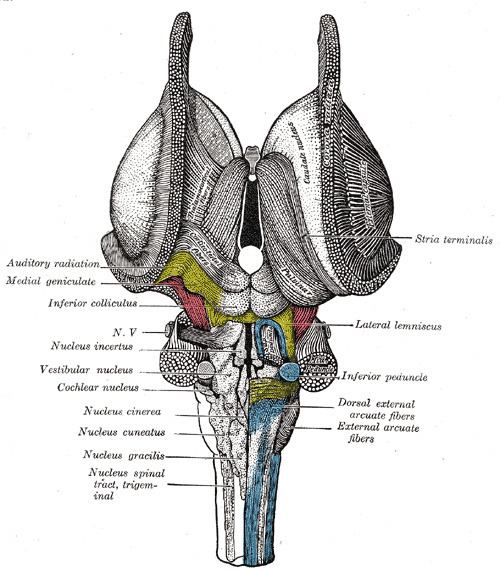Latin nucleus cuneatus NeuroLex ID Cuneate nucleus TA A14.1.04.206 | NeuroNames hier-764 Dorlands
/Elsevier n_11/12580900 FMA 68465 | |
 | ||
One of the dorsal column nuclei, the cuneate nucleus is a wedge-shaped nucleus in the closed part of the medulla oblongata. It contains cells that give rise to the cuneate tubercle, visible on the posterior aspect of the medulla. It lies laterally to the gracile nucleus and medial to the spinal trigeminal nucleus in the medulla.
Contents
Function
The cuneate nucleus is part of posterior column–medial lemniscus pathway, carrying fine touch and proprioceptive information from the upper body (above T6, except the face and ear - the information from the face and ear is carried by the primary sensory trigeminal nucleus) to the contralateral thalamus via the medial lemniscus.
Inputs
It receives direct input from the mechanoreceptors of the upper body as well as indirect input from them via the spinal cord. It is also subject to descending control from the central nervous system.
Pathology
It may be affected by vitamin E deficiency exhibiting neuroaxonal swelling.
